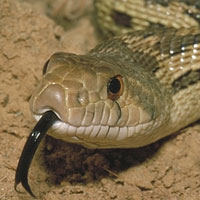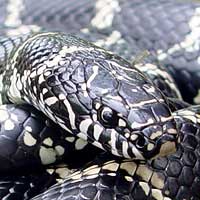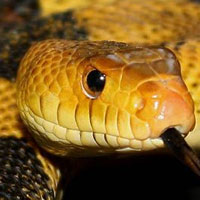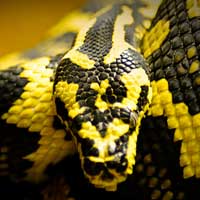Discover the Fascinating World of the Indian Cobra
The Indian Cobra (Naja naja) belongs to the Elapidae snake family, which is characterized by its highly venomous species with fixed front fangs and potent neurotoxic venom, making it a vital predator in its native habitats across the Indian subcontinent while also being one of the most culturally significant snakes in the world.
Scientific Name: Naja naja
Snake Family: Elapidae
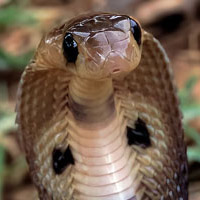
An Overview of the Indian Cobra
The Indian Cobra (Naja naja) is one of the most iconic snakes in the world, revered and feared in equal measure. Known for its hood, which displays a striking spectacle pattern, this highly venomous species is native to the Indian subcontinent. Despite its deadly venom, the Indian Cobra plays a crucial role in maintaining ecological balance by controlling pest populations.
Where Does the Indian Cobra Live?
The Indian Cobra is an adaptable species that thrives in diverse environments. Key habitat characteristics include:
- Geographic Range: Found across India, Sri Lanka, Pakistan, Bangladesh, and Nepal.
- Preferred Environments: Grasslands, forests, agricultural fields, and even urban areas.
- Climate: Prefers warm, tropical climates but is also found in subtropical regions.
Below is a table summarizing the habitat preferences of the Indian Cobra:
| Habitat Feature | Description |
|---|---|
| Geographic Range | Indian subcontinent |
| Preferred Terrain | Grasslands, forests, agricultural areas |
| Climate | Tropical and subtropical |
What Does the Indian Cobra Eat?
The Indian Cobra is a carnivorous predator with a diet that highlights its adaptability. Key dietary details include:
- Primary Prey: Rodents such as rats and mice, which it helps control in agricultural areas.
- Occasional Prey: Frogs, birds, and other reptiles.
- Hunting Strategy: Uses its potent venom to immobilize prey before swallowing it whole.
By consuming a wide variety of prey, the Indian Cobra plays an important role in pest management, benefiting both natural ecosystems and human settlements.
Understanding the Behavior of the Indian Cobra
The Indian Cobra is known for its defensive displays and cautious nature. Key behavioral traits include:
- Activity Patterns: Primarily nocturnal, though it may be active during cooler parts of the day.
- Defensive Displays: Spreads its hood to appear larger, hisses loudly, and may deliver warning strikes.
- Social Behavior: Solitary, except during mating season.
Despite its reputation, the Indian Cobra typically avoids confrontation and will only bite as a last resort when threatened.
Health and Lifespan of the Indian Cobra
The Indian Cobra is a resilient species with a relatively long lifespan. Important health considerations include:
- Lifespan: 12-20 years in captivity, slightly shorter in the wild due to predation and environmental challenges.
- Common Health Risks: Habitat loss, parasitic infections, and injuries from predators or human encounters.
- Predators: Birds of prey, mongoose, and larger snakes pose threats, especially to juveniles.
Proper care in captivity, including a suitable diet and regular veterinary check-ups, can significantly enhance the Indian Cobra’s health and longevity.
How Does the Indian Cobra Reproduce?
The Indian Cobra has a fascinating reproductive cycle. Key details include:
- Mating Season: Typically occurs in spring and early summer.
- Reproductive Method: Oviparous, laying eggs that incubate for several weeks.
- Clutch Size: Usually 12-20 eggs, depending on the size and health of the female.
- Hatchling Behavior: Juveniles are independent and venomous from birth.
This species’ reproductive success is closely tied to environmental conditions and the availability of suitable nesting sites.
Safety Guidelines for Handling the Indian Cobra
Handling the Indian Cobra requires expertise and specialized equipment. Essential safety measures include:
- Always use appropriate tools, such as snake hooks and secure containers.
- Wear protective gloves and boots to minimize the risk of envenomation.
- Ensure enclosures are escape-proof and mimic the snake’s natural environment.
- Keep antivenom readily available and have an emergency plan in place.
Only trained professionals should handle this species to ensure both human safety and the well-being of the snake.
Disclaimer
The information provided in this article is for educational purposes only. SnakeEstate strongly advises against handling or interacting with venomous snakes, such as the Indian Cobra, unless you are a trained and licensed professional. These snakes pose significant risks, and improper handling can result in serious injury or death. Always adhere to local regulations and prioritize safety when dealing with wildlife.
Other Snakes In This Species
 Asp Viper
Asp Viper Black Mamba
Black Mamba Boomslang
Boomslang Brazilian Coral Snake
Brazilian Coral Snake Bushmaster
Bushmaster Coastal Taipan
Coastal Taipan Common Death Adder
Common Death Adder Common European Adder
Common European Adder Copperhead
Copperhead Coral Snake
Coral Snake Cottonmouth
Cottonmouth Eastern Brown Snake
Eastern Brown Snake Eastern Diamondback Rattlesnake
Eastern Diamondback Rattlesnake Egyptian Cobra
Egyptian Cobra Fer-de-lance
Fer-de-lance Forest Cobra
Forest Cobra Indian Cobra
Indian Cobra Inland Taipan
Inland Taipan Jameson’s Mamba
Jameson’s Mamba King Cobra
King Cobra Lancehead
Lancehead Lataste’s Viper
Lataste’s Viper Malayan Krait
Malayan Krait Mojave Rattlesnake
Mojave Rattlesnake New Guinea Small-eyed Snake
New Guinea Small-eyed Snake Nose-horned Viper
Nose-horned Viper Puff Adder
Puff Adder Russell’s Viper
Russell’s Viper Saw-scaled Viper
Saw-scaled Viper Solomon Island Coral Snake
Solomon Island Coral Snake South American Rattlesnake
South American Rattlesnake Tiger Snake
Tiger Snake Western Diamondback Rattlesnake
Western Diamondback Rattlesnake



